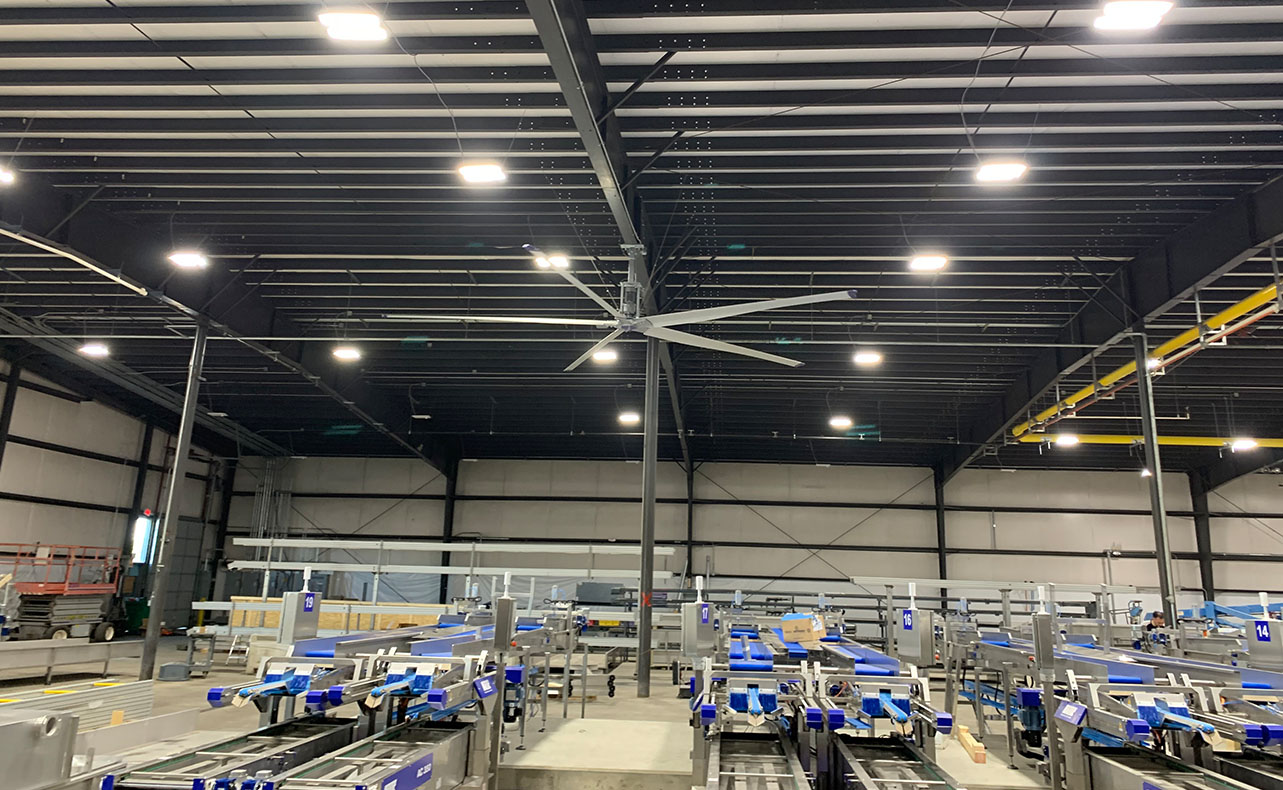
Common Missteps in Designing a Large Facility
We have been a part of facility designs for 20 years and here are 3 common missteps in designing a large facility…
Designing a large facility is a huge undertaking that requires careful consideration of various factors to ensure optimal performance and sustainability. We have been helping designers optimizing air circulation, cooling, and energy usage in large facility’s for over 20 years and this is our experience. We’re jumping into three common missteps designers make in their large facility’s and offer practical solutions to avoid them.
"Neglecting energy efficiency in facility design can lead to high operational costs and significant carbon footprints. "
1. Overlooking Air Circulation:
Proper air circulation is crucial for maintaining a comfortable and efficient environment. Yet, it is often an afterthought for many design engineers. Building designers frequently underestimate the importance of incorporating High-Volume, Low-Speed (HVLS) fans or advanced HVAC systems. Effective air circulation not only enhances employee comfort/productivity but also reduces energy costs and protects stored goods from damage due to temperature and humidity fluctuations. This will provide a huge level of value to clients that often goes overlooked. Consider the following steps to improve air circulation:
- Integrate HVLS Fans: These fans can move large volumes of air efficiently, providing consistent air flow throughout the facility in the frozen months and higher speeds for cooling in the hot months.
- Advanced HVAC Systems: Implementing modern HVAC systems with precise control over temperature and humidity levels can drastically improve facility conditions.
2. Treating Energy Efficiency as Secondary
Neglecting energy efficiency in facility design can lead to high operational costs and significant carbon footprints. Prioritizing energy-efficient solutions is essential for reducing expenses and promoting sustainability. Here are some strategies to enhance energy efficiency:
- Energy-Efficient Lighting: Use LED lights and smart lighting systems that adjust based on occupancy and natural light levels.
- Insulation: Proper insulation helps maintain stable temperatures, reducing the need for excessive heating or cooling.
- Climate Control Systems & Fans: Invest in energy-efficient climate control systems that utilize renewable energy sources when possible. In combination with a fan, we can reduce the load on traditional HVAC systems and create a baseline of air circulation and cooling within a space that uses less energy.
- Building Orientation: Planning which direction the facility is oriented relative to the wind direction. Building on an East-West orientation will naturally provide fresh air moving throughout the space.
- Natural Light Utilization: Design the facility to maximize the use of natural light, reducing the dependence on artificial lighting.
3. Poor Space Utilization
Efficient use of space is vital for smooth operations and scalability. Inefficient layouts can hinder workflows and limit the growth potential of the facility. To maximize space utilization, consider the following approaches:
- Flexible Layouts: Design adaptable layouts that can be easily reconfigured to meet changing needs.
- Modular Designs: Use modular components that can be added or removed as required, offering flexibility in space usage.
- Vertical Space: Implement vertical storage solutions such as mezzanines and high shelving units to make the most of the available cubic space. Fans will increase circulation to limit the use of unnecessary ducting, creating more vertical space.
Conclusion
By addressing these common mistakes, you as an engineer can design large facilities that are efficient, cost-effective, flexible, and sustainable. Proper air circulation, energy efficiency, and space utilization are key factors that contribute to the overall success of a large facility. For expert advice and assistance in optimizing your facility design, contact our team of specialists.
